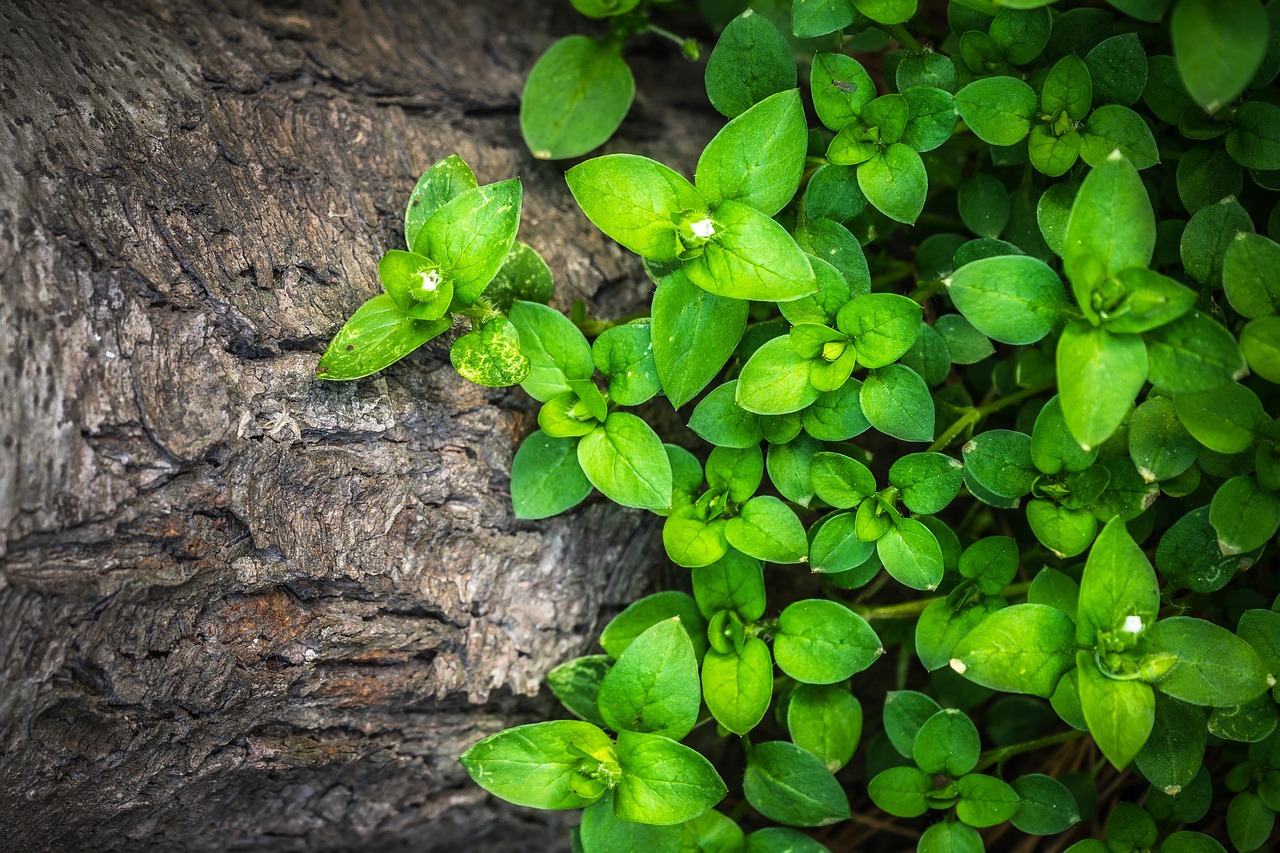Broadleaf Trees: Why They’re the Perfect Addition to Your Backyard
Broadleaf trees are an excellent choice for enhancing your backyard. They provide ample shade, vibrant fall colors, and a habitat for wildlife. Their diverse species offer unique aesthetics and benefits, making them a valuable addition to any landscape.
Broadleaf trees, also known as deciduous trees, are characterized by their wide, flat leaves. Unlike coniferous trees, which have needle-like leaves and remain green year-round, broadleaf trees shed their leaves in the autumn. This seasonal change not only adds beauty to your yard but also plays a crucial role in the local ecosystem.

There are numerous advantages to incorporating broadleaf trees into your outdoor space. They improve air quality, provide shade, and add value to your property. Furthermore, these trees are essential for biodiversity as they support various wildlife species. In addition to their ecological benefits, broadleaf trees can enhance the visual appeal of your backyard.
Benefits of Broadleaf Trees
Understanding the specific benefits of broadleaf trees can help you appreciate their value in landscaping. Below are some of the key advantages:
- Shade Provision: Broadleaf trees can provide significant shade, lowering temperatures around your home and reducing energy costs during hot months.
- Aesthetic Appeal: With their diverse shapes, sizes, and colors, these trees can enhance the beauty of any garden or yard.
- Wildlife Habitat: Many species of birds, insects, and other wildlife rely on broadleaf trees for food and shelter.
- Air Quality Improvement: Trees absorb carbon dioxide while releasing oxygen, contributing to improved air quality.
- Diversity of Species: There are numerous types of broadleaf trees available, allowing for personalized landscaping choices.
The seasonal changes of broadleaf trees also add to their appeal. In the spring, many species display vibrant new leaves, while summer brings lush greenery. In the fall, they transform into a canvas of warm colors ranging from fiery reds to golden yellows. This dramatic seasonal transition can create a stunning backdrop in your backyard.
| Tree Species | Height (ft) | Spread (ft) | Fall Color |
|---|---|---|---|
| Maple | 40-100 | 30-50 | Red, Orange |
| Oak | 60-100 | 40-80 | Brown, Yellow |
| Birch | 30-70 | 20-40 | Yellow |
Selecting the right species of broadleaf tree for your backyard can greatly impact the overall environment. Consider factors such as climate, soil type, and available space when choosing a tree species. Each type has its unique characteristics and care requirements, which can influence its growth and longevity.
In addition to their aesthetic and environmental benefits, broadleaf trees can enhance your property’s value. A well-landscaped yard with healthy trees can make a home more attractive to potential buyers. Investing in broadleaf trees is not just a beautification effort but also a strategic decision for long-term property investment.
Choosing the Right Broadleaf Trees for Your Backyard

When considering broadleaf trees for your backyard, it is essential to choose species that will thrive in your specific environment. Different trees have varying light, water, and soil requirements. Additionally, their growth habits and mature sizes can significantly influence your landscaping plans.
Factors to Consider
Before selecting a broadleaf tree, evaluate several key factors:
- Climate: Ensure the tree species is suitable for your local climate. Research the temperature ranges and seasonal changes that affect growth.
- Soil Type: Consider the soil composition in your yard. Some trees prefer sandy soils, while others thrive in clay or loamy conditions.
- Space Availability: Understand the mature size of the tree. Make sure there is ample space for it to grow without crowding other plants or structures.
- Sunlight Exposure: Determine how much sunlight your yard receives throughout the day. Some trees prefer full sun, while others are better suited for partial shade.
- Pests and Diseases: Research common pests and diseases that may affect specific tree species in your area. Choose trees that are resistant or require minimal maintenance.
Popular Broadleaf Tree Species
Here are some popular broadleaf tree species that can be great additions to your backyard:
- Red Maple (Acer rubrum): Known for its stunning red fall foliage, this tree thrives in various soil types and can grow up to 60 feet tall.
- Sugar Maple (Acer saccharum): Famous for its sweet sap used in syrup production, this tree offers beautiful autumn colors and prefers well-drained soil.
- White Oak (Quercus alba): A majestic tree that can reach heights of 80 feet, it provides excellent shade and supports wildlife.
- Sweetgum (Liquidambar styraciflua): This tree features star-shaped leaves and produces colorful foliage in the fall. It thrives in moist soils and can grow up to 100 feet.
- Eastern Redbud (Cercis canadensis): A smaller tree with beautiful pink flowers in early spring, it is ideal for smaller yards and prefers well-drained soil.
Caring for Broadleaf Trees

Caring for broadleaf trees is vital to ensure their health and longevity. Proper maintenance can help prevent diseases and promote growth. Here are some essential care tips:
Watering
Newly planted trees require regular watering to establish their root systems. Once established, many broadleaf trees are drought-tolerant, but they still benefit from occasional watering during dry spells. Here are some guidelines:
- Water newly planted trees deeply at least once a week.
- Adjust watering frequency based on rainfall and temperature.
- Avoid overwatering as it can lead to root rot.
Fertilization
Fertilizing broadleaf trees can enhance their growth and overall health. Here are some recommendations:
- Conduct a soil test to determine nutrient levels.
- Use a balanced fertilizer in early spring before new growth begins.
- Avoid excessive fertilization, which can lead to weak growth and increased susceptibility to pests.
Pruning
Regular pruning is crucial for maintaining the shape and health of broadleaf trees. Proper pruning techniques include:
- Remove dead or diseased branches to improve airflow.
- Thin crowded areas to allow light and air to reach the inner canopy.
- Avoid topping trees, as this can lead to weak growth.
The Environmental Impact of Broadleaf Trees
Broadleaf trees play a significant role in improving the environment. Their contributions include:
- Carbon Sequestration: Trees absorb carbon dioxide from the atmosphere, helping mitigate climate change.
- Biodiversity Support: They provide habitats for various species of birds, insects, and mammals.
- Soil Conservation: Tree roots help prevent soil erosion by stabilizing the ground.
- Water Cycle Regulation: Trees contribute to groundwater recharge and help maintain local water cycles.
The numerous benefits of broadleaf trees extend beyond aesthetics. By selecting and caring for the right species, you can create a vibrant landscape that positively impacts both your property and the environment.

Broadleaf Trees and Their Role in Urban Environments
As urbanization continues to expand, the importance of broadleaf trees in city landscapes cannot be overstated. These trees not only beautify urban areas but also contribute significantly to the quality of life for residents. Understanding their advantages in urban settings is crucial for effective city planning and individual landscaping.
Benefits of Broadleaf Trees in Urban Areas
Broadleaf trees provide numerous benefits specifically suited for urban environments:
- Air Quality Improvement: Trees filter pollutants from the air, such as carbon monoxide and sulfur dioxide. They also trap dust and particulate matter, leading to cleaner air.
- Temperature Regulation: Urban heat islands are common, where cities become significantly warmer than surrounding areas. Broadleaf trees provide shade, lowering surface and air temperatures.
- Noise Reduction: Trees act as natural sound barriers, absorbing and deflecting noise pollution from busy streets and highways.
- Stormwater Management: Tree canopies intercept rainfall, reducing runoff and promoting groundwater recharge. This helps prevent flooding and reduces the burden on stormwater systems.
Enhancing Urban Biodiversity
Incorporating broadleaf trees into urban planning promotes biodiversity. Here are ways they support wildlife:
- Habitat Creation: Broadleaf trees provide nesting sites and food sources for birds and other wildlife, creating pockets of biodiversity within urban areas.
- Pollinator Support: Flowering species attract bees, butterflies, and other pollinators, which are essential for healthy ecosystems.
- Food Sources: Many trees produce fruits and nuts that serve as food for various animals, supporting local food webs.
Designing with Broadleaf Trees
When designing a garden or landscape with broadleaf trees, it is essential to consider aesthetics, functionality, and ecological impact. Here are some design principles to keep in mind:
Aesthetic Considerations
Broadleaf trees can significantly enhance the visual appeal of any landscape. Consider the following:
- Color Variations: Choose species that offer vibrant foliage throughout the seasons for a dynamic landscape.
- Texture Contrast: Combine broadleaf trees with coniferous trees to create a variety of textures in your landscape.
- Shape and Size: Select trees based on their mature height and spread to ensure they fit well within your design while allowing for ample sunlight and space for other plants.
Functional Landscaping
Broadleaf trees can serve practical purposes in your yard. Here are some functional landscaping ideas:
- Shade Areas: Position trees strategically to provide shade over patios or outdoor seating areas.
- Windbreaks: Plant trees in rows to create windbreaks that protect your home from harsh winds.
- Privacy Screens: Use dense trees or multi-stemmed varieties to create natural privacy barriers from neighbors or streets.
The Maintenance of Urban Broadleaf Trees
Caring for broadleaf trees in urban settings requires attention to their unique challenges. Proper maintenance can maximize their health and longevity:
Pest Management
Pests can pose a significant threat to the health of broadleaf trees. Here are some effective pest management strategies:
- Regular Inspections: Monitor trees regularly for signs of pests or diseases, such as discolored leaves or unusual growth patterns.
- Integrated Pest Management (IPM): Employ IPM techniques that combine biological control, cultural practices, and chemical treatments as necessary.
- Plant Diversity: Promote biodiversity in your landscape to reduce pest populations naturally.
Irrigation Practices
Irrigation is crucial for maintaining the health of urban broadleaf trees. Consider these practices:
- Drip Irrigation: Implement drip irrigation systems that target tree roots directly and reduce water waste.
- Mulching: Apply mulch around the base of trees to retain moisture, regulate soil temperature, and suppress weeds.
- Seasonal Adjustments: Adjust watering schedules based on seasonal changes and rainfall patterns to avoid over or under-watering.
By understanding the roles and benefits of broadleaf trees in urban environments, you can make informed decisions when incorporating them into your landscape. Their contributions go beyond mere aesthetics; they play a vital role in enhancing community health and ecological balance.
Broadleaf Trees and Their Impact on Human Well-Being
In addition to environmental benefits, broadleaf trees have a profound impact on human well-being. Studies have shown that green spaces, particularly those with trees, contribute positively to mental and physical health. Here are several ways broadleaf trees enhance our quality of life:
Stress Reduction
Exposure to nature has been linked to reduced stress levels. Broadleaf trees create calming environments that promote relaxation. Here are some specific benefits:
- Natural Scenery: The sight of trees and greenery can soothe the mind and improve mood.
- Quiet Spaces: Tree canopies reduce noise pollution, creating peaceful retreats in urban settings.
- Recreational Areas: Parks with broadleaf trees encourage outdoor activities, contributing to physical health and social interaction.
Improved Physical Health
Regular access to green spaces encourages physical activity, which is vital for maintaining a healthy lifestyle. Broadleaf trees play a crucial role in creating environments conducive to exercise:
- Parks and Trails: Many parks feature trails shaded by trees, making walking, jogging, or cycling more enjoyable.
- Outdoor Gatherings: Shaded areas attract families and communities for picnics and gatherings, promoting social interaction.
- Active Lifestyles: Environments with trees encourage outdoor play for children, fostering lifelong habits of activity.
The Economic Value of Broadleaf Trees
Broadleaf trees also contribute economically. The presence of trees in urban areas can increase property values significantly. Here are some economic advantages associated with broadleaf trees:
- Increased Property Values: Homes surrounded by well-maintained trees can see property values rise by 10-20% compared to similar homes without trees.
- Energy Savings: By providing shade, broadleaf trees can reduce cooling costs in the summer by up to 30%, leading to substantial savings on energy bills.
- Attracting Businesses: Green spaces with trees can draw customers to local businesses, improving the overall economic health of communities.
Challenges in Maintaining Broadleaf Trees
Despite their numerous benefits, broadleaf trees face several challenges that require attention from homeowners and city planners. Here are common issues:
- Urban Space Limitations: In densely populated areas, finding space for planting can be difficult. Creative solutions are needed to integrate trees into existing landscapes.
- Pest Infestations: Urban trees can become targets for pests. Regular monitoring and management strategies are essential for tree health.
- Disease Management: Trees are susceptible to diseases that can weaken and ultimately kill them. Proper care and proactive measures are necessary to mitigate these risks.
Final Thoughts
Broadleaf trees are more than just aesthetic additions to your backyard; they serve crucial roles in environmental sustainability, urban planning, community health, and economic vitality. By providing shade, enhancing air quality, supporting biodiversity, and improving human well-being, these trees are invaluable assets to any landscape.
When selecting and caring for broadleaf trees, consider their unique characteristics and needs. Proper maintenance will ensure they thrive for years to come. As urban areas continue to expand, integrating broadleaf trees into landscapes will be essential for enhancing quality of life and promoting ecological balance.
In summary, whether you are a homeowner looking to beautify your yard or a city planner aiming to create more livable urban environments, broadleaf trees offer countless benefits that enrich our lives and the planet. Their presence is a testament to nature’s ability to enhance our surroundings and support a healthier future.
